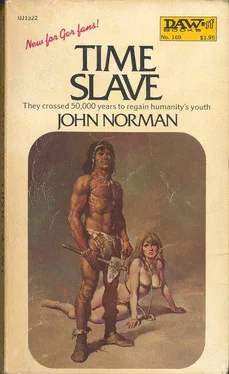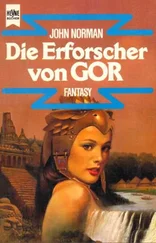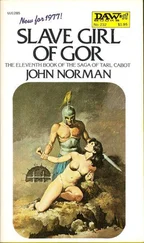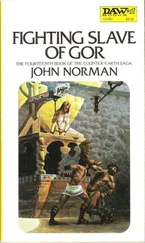“Space and time are unreal?” asked William.
“As phenomenal reality, relative to our mode of perception,” said Herjellsen, patiently, “they are quite real.”
“Is that all?”
“Perhaps,” said William, “they are a mode of perceiving something which is doubtless quite real, or, perhaps they are themselves perceptions of something-or things-which are quite real.”
“Perhaps,” said William, “they are modes of perceiving space and time, or, if perceptions, perceptions of space and time.”
“Does the music of Beethoven, the color of bright yellow, exist in nature as you hear it, as you see it?”
“No,” said William.
“Why then do you fear to extend the distinction of sensibility-dependent and sensibility-independent property to space and time?” asked Herjellsen.
“I am afraid,” said William, “because then I would be lost.”
“Yes,” said Herjellsen, “you would then be alone-without your maps. Your very world would totter.”
“Why do you suspect that space and time are not of the reality itself, or are different in that reality?”
“Space and time, as we conceive of them,” said Herjellsen, “are irrational. Thus, I conjecture they are not as we conceive of them.”
William said nothing.
“It is interesting,” said Herjellsen, “men who conceive placidly of irrationalities are accounted sane. I who question them am accounted insane. I wonder who is truly sane and who truly insane.”
Brenda Hamilton fought the terror. She shook her head. She looked into the cubicle.
It had begun with a soft glow of light, vibrating, filling the interior of the cubicle with a fog of crystals, and then it had seemed to slip to the floor of the cubicle, like beads, like molecules forming chains of light, first keeping to the margins of the cubicle, then, strand by strand, darting across the plastic floor, until now the entire floor of. the cubicle seemed laced with light, and then, tendril by tendril, it began to climb the walls of the cubicle. Now the floor of the cubicle was covered, it seemed inches thick, with a matting of light strands, and more light, like illuminated vines began to grow about the interior of the cubicle.
But it was not the light that frightened Hamilton. It was turnings and terror in her mind.
William seemed calm. He had had the experience before. He was patient.
“There are two times now,” he said, “that are present.”
“One is a memory,” whispered Hamilton.
“No,” said William. “Both are quite real. It is like a mountain and a lake. They are times, but they co-exist.”
“That is not possible,” said Hamilton.
“It is like the parts of a picture. They are different parts but they are all now. There are two times, and they are now.”
“No,” said Hamilton.
She shook her head in terror. She recalled Herjellsen saying that time, as we think of it, did not exist in the reality.
“It is like a sphere,” said William. “It is like a transparent sphere. I see two points on one surface, each opposite the other. They are related to one another. Each is different and yet they are the same, and they are both now.”
“Is it truly that way?” asked Hamilton.
William looked at her blankly. “No,” he said, “that is only a poem, a. poem.”
Hamilton shuddered. She sought a concept, a root to grasp, a branch to seize, even a poem that might try to speak what could not be spoken.
“No metaphors from the phenomenal realm are adequate or clarifying,” Herjellsen had insisted. “It is its own reality, not ours. We cannot understand it in the modes of our perception. It is another reality.”
Hamilton shuddered. There were no charts, no diagrams, no schemas, no pictures. Nothing would be adequate. It was not our reality. It was another reality.
William smiled. “It is gone now,” he said. “Are you all right?”
“Yes,” said Hamilton.
“Frightening, the disordering of the time sense,” he said.
Brenda smiled. William, light, pleasant, cool, witty, sharp, sophisticated, was again his self. His attention was now drawn to the cubicle, watching the phenomenon of the light. Now the cubicle was almost filled with the interwoven tendrils of brightness, like beaded strands of brightness. Hamilton looked at William. “Pretty good trick, what?” he asked Hamilton, not looking at her, referring to the light.
Brenda wanted to cry out with joy. Suddenly William, in his casual manner, had made the world real again for her.
It was William’s mathematics which Herjellsen utilized. William, a physician, but gifted amateur mathematician, had, utilizing analogies from the mathematics of polydimensional spaces, developed, as a fictive sport, a jeux d’esprit of ideas, a calculus for polydimensional temporalities. He had published this privately. The slim volume had come to the attention of Herjellsen, an omnivorous reader. What had been a form of fictive play for William, an engaging pastime, a lighthearted diversion, had given Herjellsen the language, the equations, for his conjecture. Men before Herjellsen had doubted the sensibility-independent nature of space and time, notably and most famously the tiny, hunchbacked, brilliant Prussian, Immanuel Kant, but Kant had not had at his disposal the mathematics of polydimensional temporalities, and Kant had been rational in a way that Herjellsen was not. Herjellsen brought to the problem the conviction that the mind might have the capacity to touch the reality. Kant had been of the Enlightenment. Mind, for Kant, had been essentially an organ of rationalities, conscious, reflective, clear, logical, Euclidean, a sunny, felicitous instrumental mechanism, common in all men, incorporating the canons of reason, a suitable device whereby man might, within his limitations, know the true, solve problems and advance in social progress. Kant was unfamiliar with the storms of the mind, the turbulences unleashed in the Nineteenth Century, the intellectual and technological explosions, and horrors, of the Twentieth. Kant was before the teachings of Freud, the investigations of the darknesses of the mind, the first organized probings into psychic phenomena, the first organized attempts to understand what might be the nature, and the powers, some perhaps untapped, and the reaches, of this mysterious, evolutionary oddity, the mind of the human being. Herjellsen, a crazed Finn, was the first man to bring together, in a madman’s brain, the conjecture, the mathematics, and the suspicion that the reality could be touched, that the key could be found, and that it lay in the mind.
The translation cubicle was now aflame with light.
Hamilton, and William, watched it with awe.
Hamilton, glancing about, cried out. Herjellsen had not moved, but there was blood on the back of his neck, beads of blood. His collar was stained. His fists were clenched. He seemed oblivious of the world, of anything, save for one thing, the thought he held in his brain.
Hamilton looked at Gunther. He had not spoken. His eyes were closed.
The cubicle was exploding with light.
“Kill it!” cried Gunther. “Kill it! Kill it!”
Hamilton cried out with fear. William put his arm about her.
“Do not be frightened,” said William. “It is the disordering of the time sense. In a moment he will be perfectly all right. It is only his reaction.”
“It’s coming!” cried Gunther. “Give me the rifle, you fool l”
Hamilton looked at him, frightened.
“It’s dead,” laughed Gunther. “It’s dead.” He looked at Hamilton. “I killed it,” he said.
“Yes, Gunther,” she whispered.
Gunther smiled, and shook his head.
“Do you hear it?” asked Hamilton. She knew it was not an actual sound. But it began to scream in her head, a highpitched, whistling note. It began to grow louder and louder. The light seemed now ready to shatter the heavy plastic of the cubicle. Hamilton could no longer look at it. She pulled away from William, shielded her eyes. The whistling note was intolerably loud. She shut her eyes against the pain of the light and, though she knew the sound was from within her brain, covered her ears with her hands. Then it seemed her brain would burst with the note, and then it was suddenly still, absolutely still.
Читать дальше












